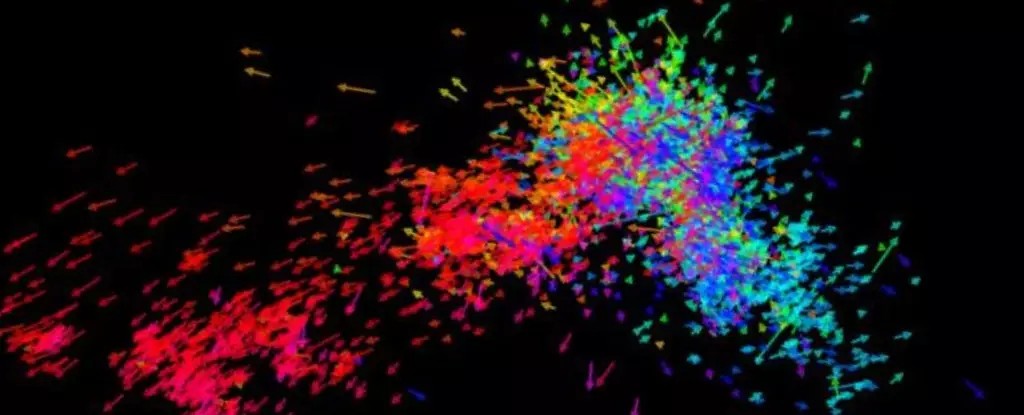The cosmos is home to countless celestial wonders, yet few structures are as intriguing as the Magellanic Clouds. Nestled among the constellations observable in the Southern Hemisphere, these two dwarf galaxies — the Large Magellanic Cloud (LMC) and the Small Magellanic Cloud (SMC) — have captivated astronomers for centuries. Named after the Portuguese explorer Ferdinand Magellan who first documented them during his historic navigation through uncharted waters, the Clouds are more than just distant formations. They are dynamic and evolving systems, offering key insights into the processes that shape galaxies.
The recent research undertaken by a team from Nagoya University is shedding new light on the complex interplay between the SMC and its larger counterpart, the LMC. Located roughly 160,000 and 200,000 light-years away from Earth, these galaxies are rich in young, vibrant stars and copious gas, making them fertile grounds for understanding cosmic evolution. This is particularly pertinent in light of new findings that suggest the SMC is undergoing significant disturbance — and possibly even disintegration — due to gravitational pull from the LMC.
A Gravitational Tug-of-War
Turning their focus to the SMC, researchers led by Satoya Nakano and Kengo Tachihara undertook the monumental task of tracking approximately 7,000 massive stars within the galaxy. These substantial celestial bodies, each over eight times the mass of our Sun, serve as telltale markers in the broader galactic narrative. As Nakano and his team meticulously observed the trajectories of these stars, they uncovered a startling revelation: the stars were moving in seemingly opposite directions, some heading toward the LMC while others moved away from it.
This duality of motion signifies something far more profound than mere stellar wandering. It is indicative of the gravitational forces at play, suggesting that the SMC is not just in a distant orbit around the LMC, but is actively being torn apart by these tides of gravity. This ongoing galactic disruption hints at a dramatic fate for the SMC, which may eventually lead to its dissolution. Such a fate would not only be a loss of a galactic companion but would also enhance our understanding of the universe’s architecture and the tumultuous life cycles of galaxies.
Breaking Patterns: The Absence of Rotation
What makes this exploration particularly compelling is the unexpected lack of rotational movement among massive stars within the SMC. In many galaxies, stars share a communal motion, orbiting in sync with their surrounding gas clouds. However, in a twist that defies conventional understanding, stars in the SMC reveal no such pattern of rotation. This anomaly suggests that the gas relationship in the SMC is far more complex than previously thought, perhaps indicating that the gas itself is not rotating coherently at all.
This revelation becomes even more significant when considering the implications for mass calculations of the SMC and its gravitational interactions with both the LMC and the Milky Way. If the SMC’s gas dynamics are anomalous, astrophysicists may need to reevaluate fundamental assumptions about the nature of galaxy formation and adhesion. As Nakano suggests, this could dramatically alter our grasp of the gravitational interplay among these cosmic entities, necessitating a shift in our understanding of the early epochs of the Universe.
Connecting the Dots: The Cosmic Narrative
The study of the SMC and its relationship with the LMC shines a light on pivotal processes that govern galaxy interactions and evolution. The SMC, bearing similarities to primordial galaxies, acts as a living fossil, illuminating aspects of galaxy formation that remain obscured in more evolved systems like our Milky Way. By studying the intricate motion of stars and gas within the SMC, researchers can weave a more cohesive narrative concerning the relationship between star formation and galactic dynamics.
As we endeavor to unlock the secrets of these celestial systems, the ramifications extend beyond academic curiosity. They challenge our preconceived notions about the universe, prompting us to rethink how galaxies interact, evolve, and ultimately merge over astronomical timescales. The Magellanic Clouds, in their cosmic ballet, remind us that soon enough, their dance might come to an end — but the knowledge gleaned from their movements could transform our understanding of the cosmos for generations to come.


Leave a Reply